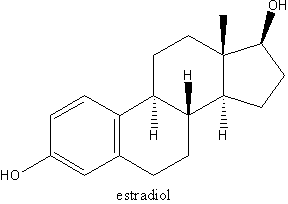Anorexia nervosa affects 0.2 to 4 percent of adolescent girls in the United States and is increasing in prevalence. In addition to the 5.6 percent mortality rate of adults with anorexia, changes in bone metabolism and other nutritional parameters are common. Few data exist to define the consequences of these complications. Misra and colleagues studied various hemodynamic and laboratory parameters that are found in community-dwelling adolescents with anorexia to promote vigilance as well as timely and effective intervention.
The study included 118 adolescent girls 12 to 19 years of age. Sixty girls diagnosed with anorexia nervosa were compared with 58 healthy girls. Participants in the anorexia nervosa group were receiving outpatient care but had not been hospitalized for at least three months. The authors evaluated clinical characteristics (e.g., body mass index [BMI], blood pressure, heart rate, blood count, bone age, chronologic age, and bone density) as well as biochemical data (e.g., follicle-stimulating hormone, luteinizing hormone, hematocrit, glucose, potassium, calcium, creatinine, estradiol [Estraderm], urinary free cortisol, and insulin-like growth factor 1 [IGF-1] levels). BMI and weight were lower in the anorexia nervosa group compared with the control group, as was the ratio of bone age and chronologic age. Premenarchal girls with anorexia nervosa were older than premenarchal girls in the control group. The anorexia nervosa group also had lower blood pressure and mean heart rates than girls in the control group. Participants with anorexia nervosa were more likely to have a higher mean corpuscular volume and lower red and white blood cell counts, despite insignificant differences in hematocrits. Calcium and phosphorus levels were not different between groups, but potassium and urinary free cortisol levels were slightly higher in the anorexia nervosa group. Urinary free cortisol levels standardized for creatinine and for surface area and creatinine were also higher in the anorexia nervosa group, compared to the control group. Estradiol and IGF-1 levels were significantly lower in the anorexia nervosa group. Participants in the anorexia nervosa group had significantly lower bone density, particularly at the lumbar spine. Bone density measurements at the hip and femoral neck were also significantly lower in the anorexia nervosa group. When controlling for other factors, lean body mass was the most significant predictor of bone mineral density at most sites.
The authors conclude that community-dwelling adolescent girls with anorexia nervosa had an increased risk for hematologic, metabolic, hemodynamic, and skeletal abnormalities, including bradycardia, low blood pressure, and pubertal delay, compared with healthy girls. They recommend that physicians monitor these parameters closely in anorexia nervosa patients.
CAROLINE WELLBERY, M.D.
Misra M, et al. Effects of anorexia nervosa on clinical, hematologic, biochemical, and bone density parameters in community-dwelling adolescent girls. Pediatrics December 2004;114:1574-83.
COPYRIGHT 2005 American Academy of Family Physicians
COPYRIGHT 2005 Gale Group



